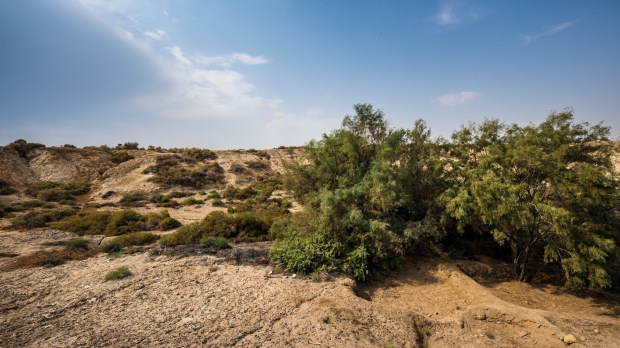Cana is known for being the scene of Jesus’ first miracle, the changing of water into wine at a wedding feast (John 2, 1-11). Some commentators claim the wedding might have possibly been that of a close relative of Jesus’ mother. As they ran out of wine, Mary turned to her Son to avoid any potential embarrassment. The Gospel says Jesus replied asking his mother “what concern is that to you and to me? My hour has not yet come.” But Mary persisted and Jesus turned six jars holding more than 550 liters of water (the equivalent of approximately 730 bottles) into fine wine.
Another miracle (his second public miracle in the region of Galilee, in fact) also took place in Cana: the remote healing of a royal official’s son who was 32 kilometers away, in Capernaum (John 4, 43-54). The second time Jesus visited Cana, he was met by a distressed official of the court of Herod Antipas. The official lived at Capernaum, and had come to plead for his son, who was dying. “Go; your son will live,” Jesus told the official.
Whereas Kefer-Kenna (also known as Kefr Kana and Kfar-Cana) has traditionally been considered the place in which the miracle of the wine took place (at least since 1641, when the Franciscans established themselves there relying on the testimonies of early pilgrims including St. Jerome himself), the truth is the actual location of Cana is uncertain. As it often happens with biblical locations, five different places claim to be the biblical Cana: the village of Qana, in Lebanon, 18 miles from Tyre; Kfar-Cana, in Israel, 7 kilometers northeast of Nazareth; Khirbet Kana, also in Israel, visited by pilgrims since the 12th century; Karm er-Rasm, in Israel, the place allegedly identified by Josephus according to the Israeli archaeologist Yardenna Alexandre; and Ain Qana, “the spring of Cana,” about a mile north of Nazareth.
Of all these places, only two, Kfar-Cana and Khirbet Kana, seem to have been receiving pilgrims for more than 10 centuries. Even if Franciscans only arrived in Kfar-Cana in the 17th century, as they built their church, they found not only the remains of an ancient basilica but also the remains of some dwellings that have been dated back to the 1st century. In fact, not far from the Franciscan church, one finds the Greek Orthodox Church of the Marriage Feast. There, two large stone jars are preserved: tradition claims these are two of the original water pots involved in Jesus’ first public miracle. However, archaeologists suggest these are more likely to be old baptismal fonts.
In Khirbet Kana, as well, 6th century engravings have been found indicating the possible location of Cana. One of the early pilgrims to Cana, the so-called “Anonymous Pilgrim of Piacenza,” was the author of “religious graffiti” from 570:
“Our Lord was at the wedding,” he wrote, “and we reclined upon his very couch upon which I, unworthy that I am, wrote the names of my parents.”
This graffiti shows the place was already a pilgrimage destination in the 6th century (but please, if you visit, abstain from following Piacenza’s example). In fact, plenty of Byzantine sources claim this is indeed the place, and late medieval authors and cartographers have helped contemporary archaeologists discover cave complexes (most likely used by anchorites and hermits) and the remains of small villages from the Hellenistic period onward that make Khirbet Kana a strong candidate.
However, when in the Holy Land, make sure to visit both. They are not really that far away from each other.

